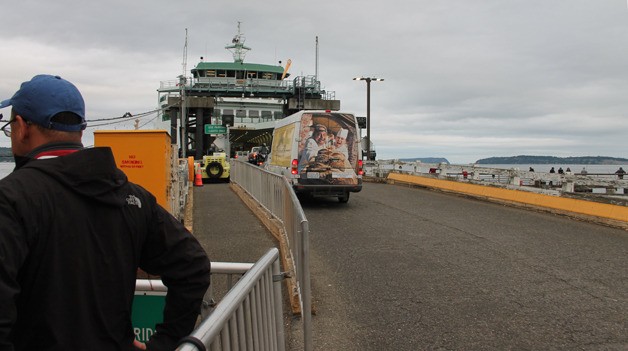An environmental review of the proposed Mukilteo ferry terminal is officially completed.
With the Federal Transit Administration’s Record of Decision, the state Department of Transportation, Ferries Division can move on to the terminal’s design.
Interim Ferries Division Assistant Secretary Capt. George Capacci heralded the federal OK this week as a major milestone for his department.
“We needed to get this Record of Decision, which signals the completion of the environmental review process, behind us,” said Capacci during a phone interview Thursday.
Work is slated to begin with the demolition of the property’s defunct Air Force oil tank farm and pier by spring 2015. A call for bids is expected to go out in October. Ferries Division estimates the total cost for the project at about $129 million.
While all of that money is slated to be spent on the Mukilteo-side of the ferry route, no money is marked for the other half of its run in Clinton.
Highway 525 is connected from Snohomish to Island counties only by the ferry system, which transported an estimated 3.8 million riders in 2012.
The route is projected to transport 5.9 million riders by 2030.
South Whidbey residents questioned state transportation officials about what can be done to mitigate traffic impacts on the Whidbey side of the ferry crossing.
“Nothing is planned, as far as I know, on this side to accommodate more [riders],” said Jack Lynch, president of the Clinton Community Council.
Nicole McIntosh, Ferries Division engineering design manager for terminals, said the ridership number can be misleading because people may assume ridership equals vehicles.
A large percent of the increase in ridership is based on walk-on passengers, she explained.
In 2013, several Clinton residents formed the community council as a means of better representing the large South Whidbey area best known for being the ferry landing. One of the group’s goals is to communicate the unincorporated area of Island County’s desires for traffic remediation on the highway.
“We feel that there are improvements that need to be made on this side as it is, let alone with more traffic,” Lynch said.
Reducing the traffic congestion in Mukilteo around the ferry terminal, taking out old creosote pilings and providing more secluded access to the ferry were reasons McIntosh and Capacci said the new terminal remains necessary. Looking at the regional impacts and any possible improvements is further out.
“That’s a little bit downstream right now,” Capacci said. “We’re celebrating the Record of Decision.”
Built in 1952, the current Mukilteo ferry terminal needs a lot of regular maintenance and is believed structurally unsound in the event of an earthquake because of the material on which it was built.
Taking the ferry transfer span out of a general traffic area was especially important, Capacci said, with traffic at the nearby Lighthouse Park and restaurants often at odds with the ferry’s loading/unloading procedures.
Work for the Mukilteo site includes demolition of the oil tank farm and its pier, rerouting traffic from the Highway 525 bridge over the railroad to First Street, building the new vehicle holding lot and the terminal with overhead walk-on access.
Ferries will finish its design of the new terminal, which Capacci said is about 15 percent completed, and is waiting on permits from the Army Corps of Engineers before construction can begin sometime in 2017.
The new terminal is scheduled to go into use by 2019.



